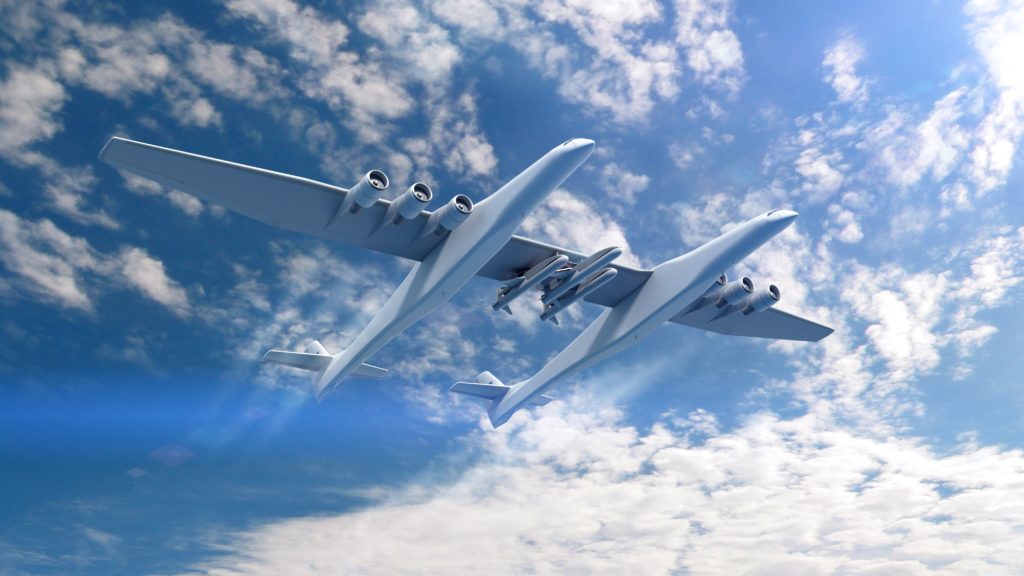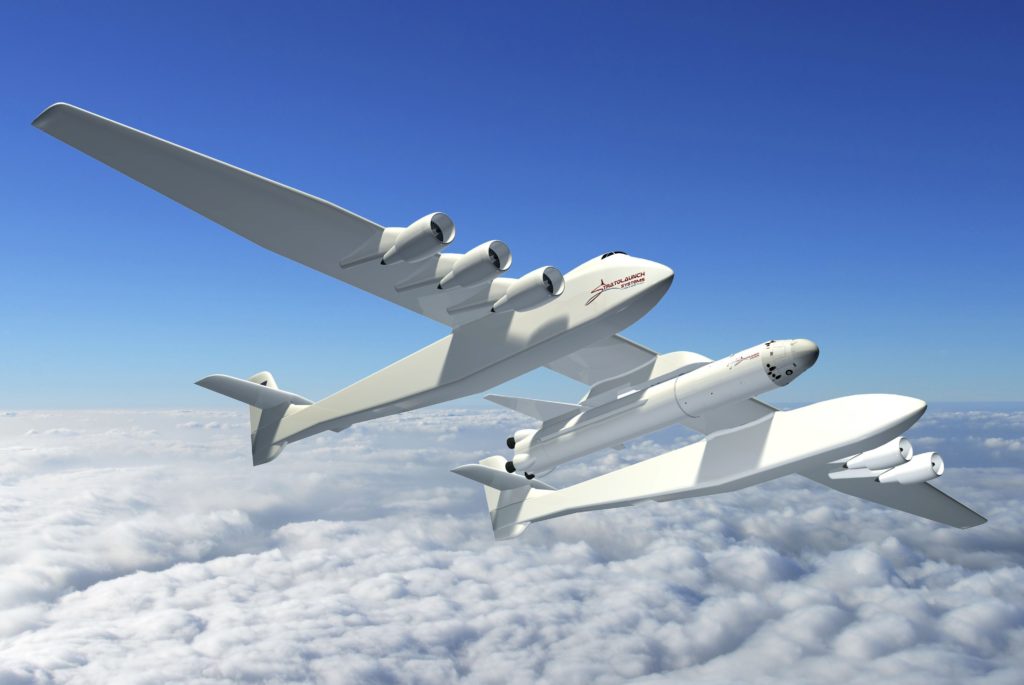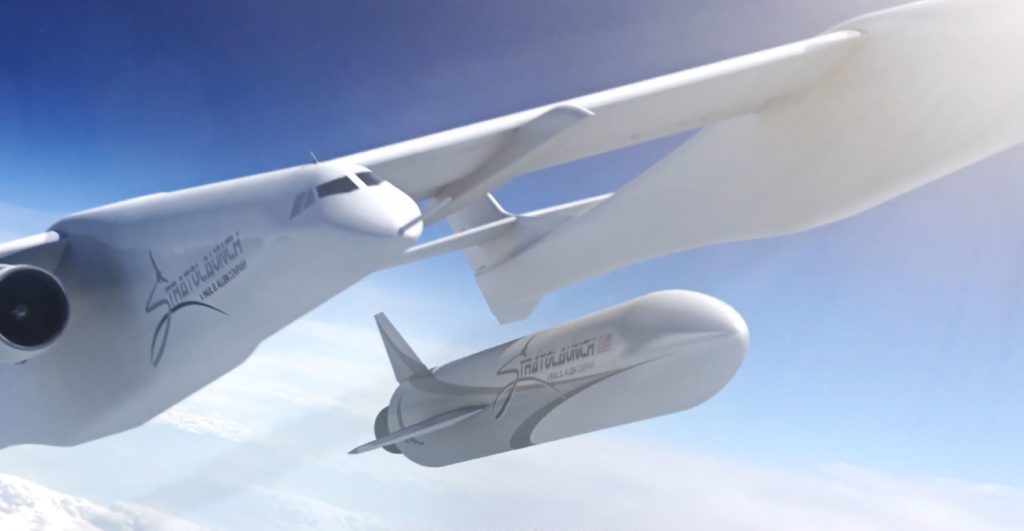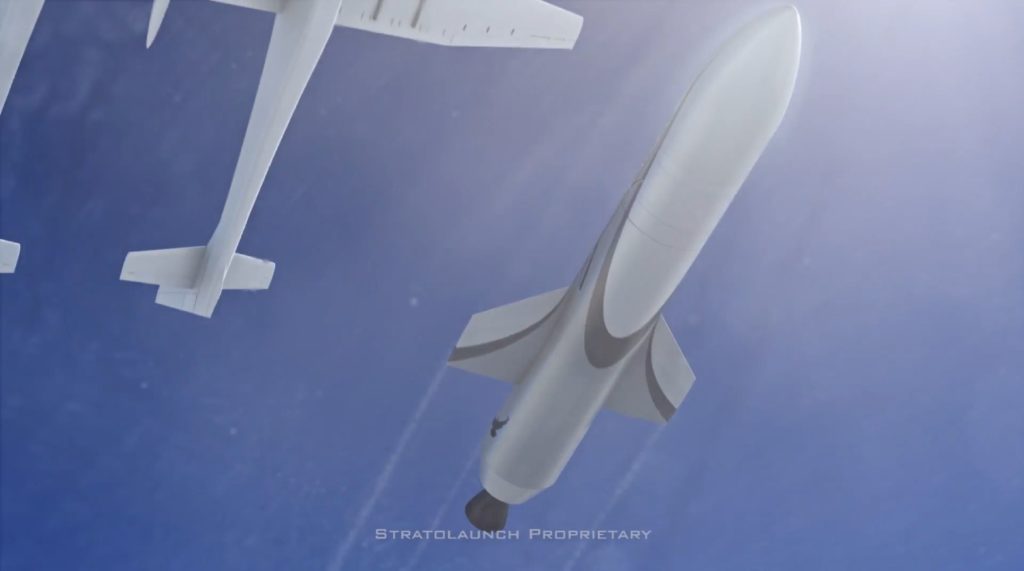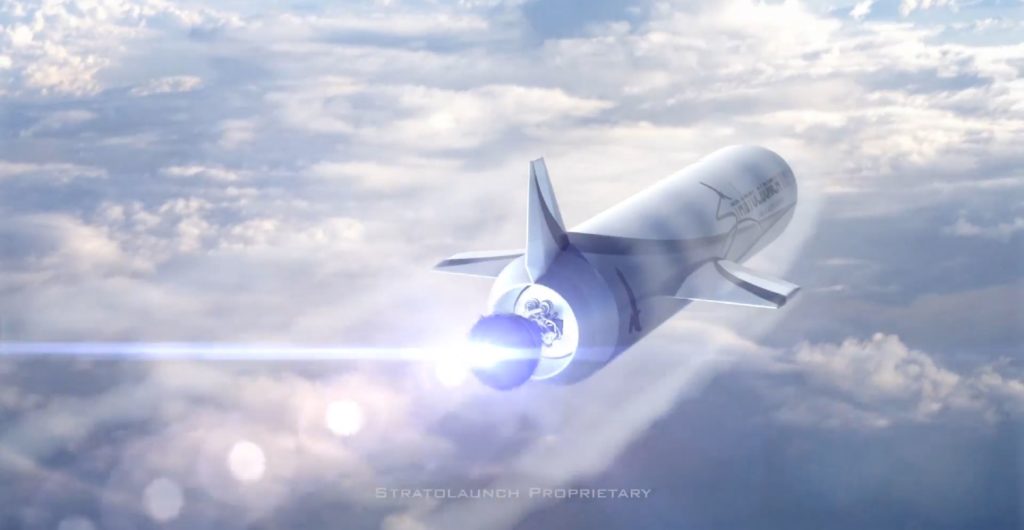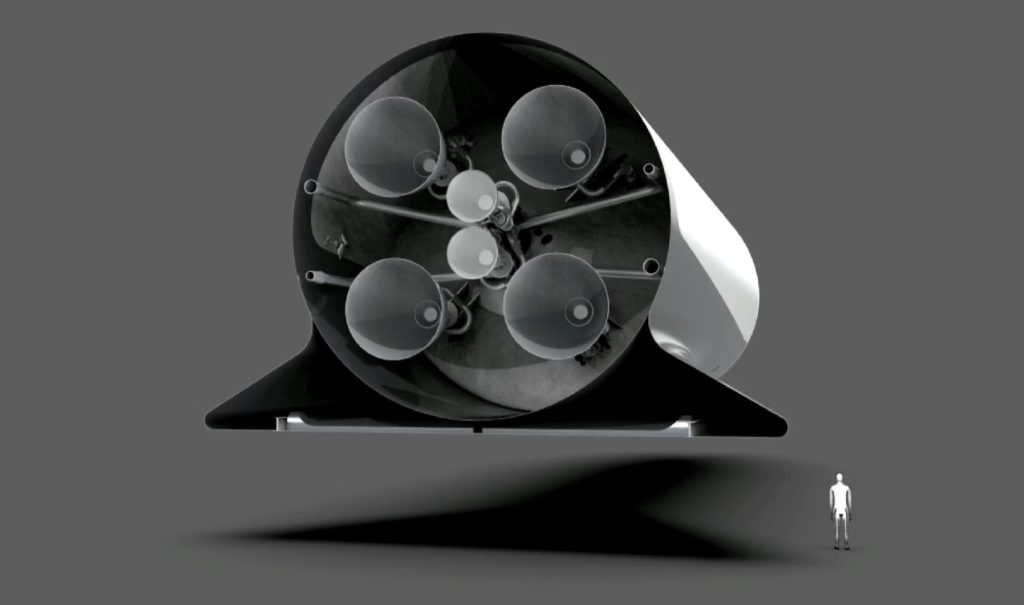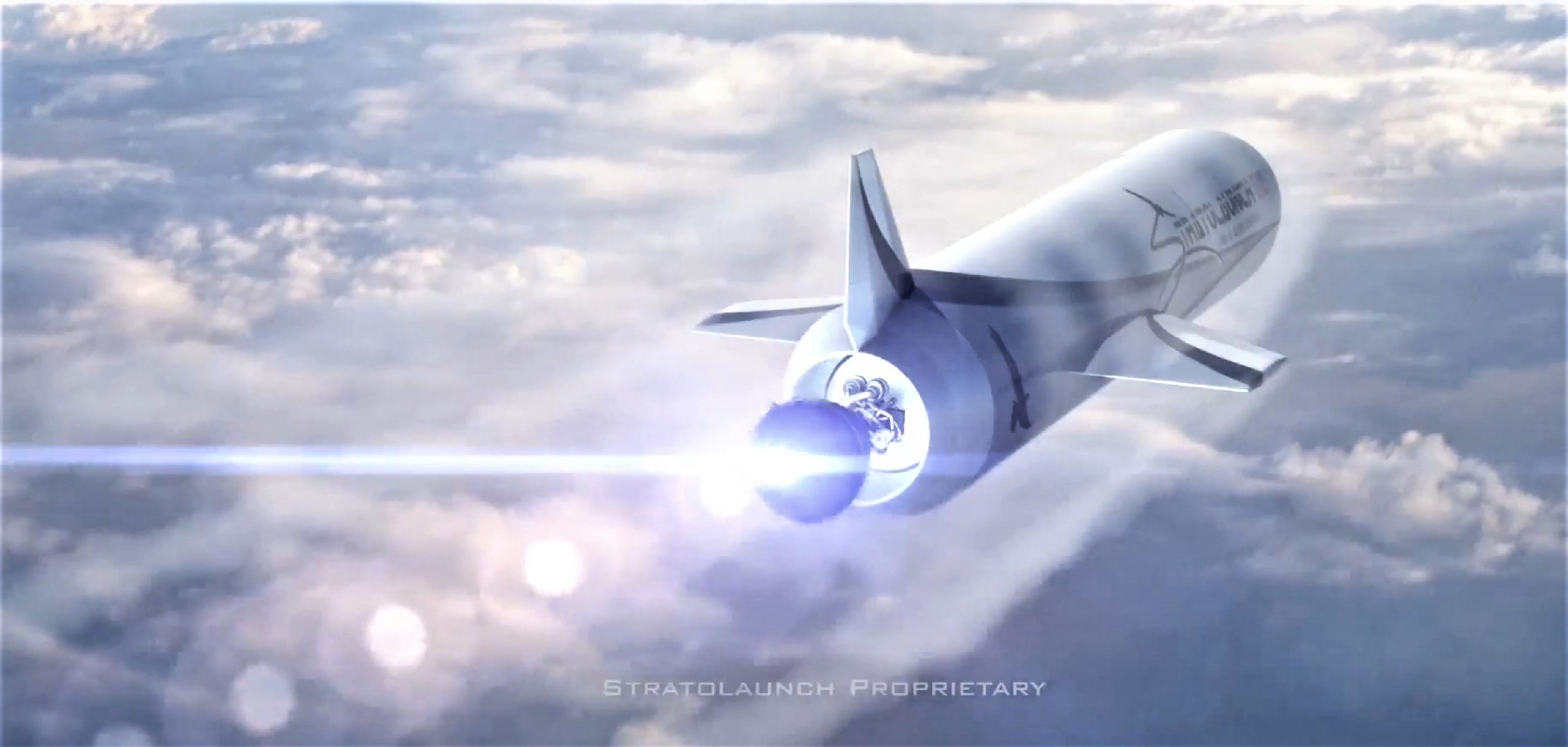

News
Ex-SpaceX engine expert to help design rockets built for launch on world’s largest jet
Stratolaunch, an aerospace company funded by Microsoft-made billionaire Paul Allen to build the world’s largest flightworthy aircraft, has announced a decision to build its own liquid-fueled rockets, to be air-launched from the aforementioned mega-plane.
Targeting an inaugural launch of the first version of the rocket – currently nicknamed “Kraken” – as early as 2022, Stratolaunch has chosen Jeff Thornburg, formerly SpaceX’s Vice President of Propulsion Engineering and the father of the company’s Mars-focused Raptor engine, to lead its foray into in-house rocket propulsion development and manufacturing.
Stratolaunch has confirmed what most people have long speculated: it’s developing its own launch vehicles for its air-launch system, including a reusable space plane that could eventually carry people. pic.twitter.com/nF9lKVe4xk
— Jeff Foust (@jeff_foust) August 20, 2018
But first: building the world’s largest aircraft
Stratolaunch’s first task at hand, however, is to begin flight-testing the largest (hopefully) operational aircraft in history, a prerequisite for the company’s longer-term orbital rocket and spaceplane aspirations. Nicknamed “Roc” after a mythical (and fictional) bird so large it could carry an elephant, the plane certainly lives up to its namesake. Featuring a full six of the same engines that power Boeing’s once-record-breaking 747 airliner and a wingspan that could easily fit three smaller 737 airliners with room to spare, it is genuinely difficult (if not impossible) to successfully convey the sheer scale of Roc outside of witnessing it in person.
Stationed in California’s Mojave Desert, the aircraft’s one and only copy is, for the most part, completed and has spent the brunt of 2018 conducting runway taxi tests, hopefully culminating in an inaugural flight test later this year or early next year. Designed to lift orbital-class rockets weighing as much as 250 metric tons (550,000 lb) to an altitude of at least 9100 meters (30,000 feet), the primary benefit of using aircraft as launch platforms derives from the simple fact that the atmospheric density at 30,000 feet is more than three times less than that at sea level. Similar to aircraft, rocket performance dramatically improves as atmospheric density decreases: less atmosphere means lower drag and pressure.
Rockets that launch from sea-level have to grapple with the difficulties of Earth’s relatively thick atmosphere at that height, with major launch events like “Max-Q” being big concerns almost solely because the dense air exerts major forces on launch vehicles and demands extreme measures like throttling down booster engines (very inefficient) and optimizing structures for aerodynamic efficiency despite the fact that rockets spend very little time operating in a significant atmosphere.
A launch pad without a rocket (sort of)
However, the simple fact of the matter is that billionaire Paul Allen’s colossal aircraft essentially does not have a single air-launched rocket in the world that can properly take advantage of its capabilities. Originally sized and designed with an air-launched version of SpaceX’s Falcon 9 in mind, that relationship folded amicably after roughly a year (2012), at which point SpaceX realized it would need to almost completely redesign a unique variant of Falcon 9. Your author will readily admit that they have admired the insanity of such a massive plane while still severely doubting its practical utility.
Thankfully, it appears that Allen is adamantly opposed to the idea that Stratolaunch is some silly whim to build the world’s largest plane. Rather, he is exceptionally reserved and pragmatic when discussing the aerial launch platform, according to a recent and extensive interview by Wired Magazine’s Steven Levy.
“Allen isn’t one to show exuberance, and when he speaks about the plane he focuses on its future utility. ‘When you see that giant plane, it’s a little nutty,’ he says. ‘And you don’t build it unless you’re very serious, not only about wanting to see the plane fly but to see it fulfill its purpose. Which is getting vehicles in orbit.’ – Paul Allen, 2018
- Stratolaunch’s Roc shown with a triplet of Orbital ATK Pegasus XL rockets. (Vulcan Space)
- Back in 2012, SpaceX briefly entertained the idea of a Falcon 9 variant optimized for air-launch, potentially including crew rating the rocket down the road. (Stratolaunch/Dynetics)
- The Roc is inconceivably vast. (Stratolaunch)
Currently, Orbital ATK’s (now Northrop Grumman Innovation Systems) air-launched Pegasus XL rocket is the only “customer” in the world that can realistically use Stratolaunch as a launch platform, not exactly an impressive or sustainable launch vehicle with a maximum performance of less than 450 kg (~1000 lbs) to low Earth orbit for an incredible ~$40 million per (expendable) flight.
To answer that call and ensure Stratolaunch’s utility, the company reportedly began seriously considering its own in-house expendable and reusable rockets and propulsion systems sometime in 2016, plans that have since grown concrete and been publicly embedded into Stratolaunch’s overarching mission. Nicknamed “Kraken” after the mythical sea monster, the company hopes to develop an initially expendable rocket system capable of launching 3400 – 6000 kg (~7500 – 13250 lbs) into low Earth orbit with single booster and triple booster variants. Further down the line, Stratolaunch is eyeing the design and production of a fully and rapidly reusable orbital spaceplane, potentially including a version that would carry astronauts into space.
- A concept video produced by Stratolaunch shows the Roc launching a Kraken rocket. (Stratolaunch, via Wired)
- A concept video produced by Stratolaunch shows the Roc launching a Kraken rocket. (Stratolaunch, via Wired)
- A concept video produced by Stratolaunch shows the Roc launching a Kraken rocket. (Stratolaunch, via Wired)
- SpaceX’s subscale Raptor engine has completed more than 1200 seconds of testing in less than two years. (SpaceX)
- BFS (circa 2017) shows off its complement of SL and Vacuum Raptor engines. SpaceX is moving back to something similar to this. (SpaceX)
Normally, one might simply roll their eyes at yet another startup touting small(ish) expendable rockets with first launches no earlier than the early 2020s – the market is getting to be absurdly and impossibly overcrowded at this point. However, Stratolaunch differs for one fundamental and reason: they have placed ex-SpaceX propulsion executive and expert Jeff Thornburg at the helm of the company’s freshly public rocket propulsion wing. While at SpaceX, Mr. Thornburg spent all but one of his five years with the company (2011-2015) single-mindedly focused on the development and engineering of all aspects of the Raptor rocket engine, a next-generation propulsion system designed to enable SpaceX’s sustainable colonization of Mars.
Raptor is an exceptional rocket engine thanks in no small part to Thornburg’s brilliance as a propulsion engineer, and that same brilliance and half-decade of experience at the most successful rocket startup in existence could ultimately prove a massive boon for Stratolaunch’s otherwise interesting but unexceptional expendable rocket concepts.
Put simply, under Jeff Thornburg’s direction and with access to founder Paul Allen’s considerable wealth, Stratolaunch is undoubtedly worth keeping a close eye in the future, both far and near.
For prompt updates, on-the-ground perspectives, and unique glimpses of SpaceX’s rocket recovery fleet check out our brand new LaunchPad and LandingZone newsletters!
News
SpaceX’s Crew-11 mission targets July 31 launch amid tight ISS schedule
The flight will lift off from Launch Complex 39A at Kennedy Space Center in Florida.

NASA and SpaceX are targeting July 31 for the launch of Crew-11, the next crewed mission to the International Space Station (ISS). The flight will lift off from Launch Complex 39A at Kennedy Space Center in Florida, using the Crew Dragon Endeavour and a Falcon 9 booster.
Crew Dragon Endeavour returns
Crew-11 will be the sixth flight for Endeavour, making it SpaceX’s most experienced crew vehicle to date. According to SpaceX’s director of Dragon mission management, Sarah Walker, Endeavour has already carried 18 astronauts representing eight countries since its first mission with NASA’s Bob Behnken and Doug Hurley in 2020, as noted in an MSN report.
“This Dragon spacecraft has successfully flown 18 crew members representing eight countries to space already, starting with (NASA astronauts) Bob (Behnken) and Doug (Hurley) in 2020, when it returned human spaceflight capabilities to the United States for the first time since the shuttle retired in July of 2011,” Walker said.
For this mission, Endeavour will debut SpaceX’s upgraded drogue 3.1 parachutes, designed to further enhance reentry safety. The parachutes are part of SpaceX’s ongoing improvements to its human-rated spacecraft, and Crew-11 will serve as their first operational test.
The Falcon 9 booster supporting this launch is core B1094, which has launched in two previous Starlink missions, as well as the private Ax-4 mission on June 25, as noted in a Space.com report.
The four-members of Crew-11 are NASA astronauts Zena Cardman and Mike Fincke, as well as Japan’s Kimiya Yui and Russia’s Oleg Platonov.
Tight launch timing
Crew-11 is slated to arrive at the ISS just as NASA coordinates a sequence of missions, including the departure of Crew-10 and the arrival of SpaceX’s CRS-33 mission. NASA’s Bill Spetch emphasized the need for careful planning amid limited launch resources, noting the importance of maintaining station altitude and resupply cadence.
“Providing multiple methods for us to maintain the station altitude is critically important as we continue to operate and get the most use out of our limited launch resources that we do have. We’re really looking forward to demonstrating that capability with (CRS-33) showing up after we get through the Crew-11 and Crew-10 handover,” Spetch stated.
Lifestyle
EV fans urge Tesla to acquire Unplugged Performance for edge in fleet and security industry
Unplugged Performance has built a name for itself by producing performance upgrades for Tesla vehicles.

A growing number of Tesla enthusiasts and longtime community voices are calling on the electric vehicle maker to acquire Unplugged Performance, a California-based aftermarket company best known for tuning Tesla vehicles and developing specialized government fleet solutions under its UP.FIT division.
The idea was once considered a niche proposal among EV fans, but it is now gaining serious attention not just as a performance play but as a strategic move to deepen Tesla’s roots in the fleet and security industry.
A strategic fit
Unplugged Performance has built a name for itself by producing performance upgrades for Tesla vehicles, from track-optimized components to visual and aerodynamic upgrades. But in recent years, its UP.FIT division has pivoted toward a more functional future by outfitting Tesla vehicles like Model Ys for police, military, and government use.
That work has sparked growing calls for closer collaboration with Tesla, especially as the EV maker increasingly leans into autonomy, AI, and fleet services as core components of its next chapter.
“I posted this four years ago, but I think it’s more true now than ever,” wrote Whole Mars Catalog, a well-known Tesla investor and FSD Beta tester, on X. “Tesla should buy Unplugged. But not just as a Performance division. What they are doing with UP.FIT unlocks large government and commercial fleet purchases that can improve utilization.”
Tesla fans such as shareholder Sawyer Merritt echoed the sentiment, calling Unplugged a “great fit within Tesla.” adding, “They are literally located directly next to Tesla’s design studio in Hawthorne.”
Enabling the next wave
Supporters of the idea noted that integrating Unplugged into Tesla’s corporate structure could help accelerate the adoption of autonomous technologies in government sectors. With UP.FIT patrol cars already in use across some U.S. police departments, Tesla fans envisioned a future where self-driving Teslas could potentially revolutionize law enforcement, search-and-rescue, and public service logistics.
“Just imagine how autonomous patrol cars could transform policing and bring us into a safer future,” the veteran FSD tester wrote.
The benefits could also extend to Tesla’s existing consumer base. “They also have some incredible products in the works that I think will appeal to many ordinary Tesla drivers — not just those looking for performance or mods. Stuff that’s so good it should have come straight from the design studio next door,” Whole Mars Catalog noted.
Unplugged Performance, founded in 2013, shares not just a product vision with Tesla, but also geography. Its Hawthorne headquarters sits directly adjacent to Tesla’s design studio, and the two companies have maintained a close working relationship over the years. The aftermarket firm has long positioned itself as a “mission-aligned” partner to Tesla.
In response to the recent calls for acquisition, Unplugged Performance acknowledged the support from the community. “Our very existence is to support the Tesla mission with @UpfitTesla and @UnpluggedTesla,” Unplugged CEO Ben Schaffer posted on X. “We love working with Tesla and are grateful for the community’s support since 2013!”
News
Tesla debuts hands-free Grok AI with update 2025.26: What you need to know
All new Tesla vehicles delivered on or after July 12, 2025, will include Grok AI out of the box

Tesla has begun rolling out Grok, an in-car conversational AI assistant developed by xAI, to eligible vehicles starting July 12. The feature marks the most direct integration yet between Elon Musk’s artificial intelligence startup and Tesla’s consumer product lineup, offering drivers hands-free access to a chat-style companion while on the road.
Grok comes pre-installed on new vehicles
According to Tesla’s FAQ page for the feature, all new vehicles delivered on or after July 12, 2025, will include Grok AI out of the box. Owners of older vehicles may gain access through an over-the-air update, provided their vehicle meets a few hardware and software requirements.
Specifically, Grok is currently only supported on Tesla models equipped with an AMD infotainment processor and running vehicle software version 2025.26 and higher. Compatible models include the Model S, Model 3, Model X, Model Y, and Cybertruck. A Premium Connectivity subscription or active Wi-Fi connection is also required.
Tesla notes that additional vehicle compatibility may arrive in future software updates.
Grok’s features and limitations for now
Drivers can engage with Grok using the App Launcher or by pressing and holding the voice command button on the steering wheel. Grok is designed to answer questions and hold conversations using natural language, offering responses tailored to its chosen personality—ranging from “Storyteller” to the more eccentric “Unhinged.”
For fun, Tesla posted a demonstration of Grok likely running on “Unhinged” talking about what it would do to Optimus when they are on a date, much to the shock of the humanoid robot’s official social media account.
It should be noted, however, that Grok cannot currently issue commands to the vehicle itself, at least for now. Traditional voice commands for tasks like climate control, navigation, or media remain separate from Grok as of writing.
The feature is being released in Beta and does not require a Grok account or xAI subscription to activate, although that policy may change over time.
Grok privacy and in-car experience
Tesla emphasizes that interactions with Grok are securely processed by xAI and not linked to a user’s Tesla account or vehicle. Conversations remain anonymous unless a user signs into Grok separately to sync their history across devices.
Tesla has also begun promoting Grok directly on its official vehicle webpages, showcasing the feature as part of its in-car experience, further highlighting the company’s increasing focus on AI and infotainment features on its all-electric vehicles.
-

 Elon Musk2 weeks ago
Elon Musk2 weeks agoTesla investors will be shocked by Jim Cramer’s latest assessment
-

 Elon Musk2 days ago
Elon Musk2 days agoxAI launches Grok 4 with new $300/month SuperGrok Heavy subscription
-

 Elon Musk5 days ago
Elon Musk5 days agoElon Musk confirms Grok 4 launch on July 9 with livestream event
-

 News1 week ago
News1 week agoTesla Model 3 ranks as the safest new car in Europe for 2025, per Euro NCAP tests
-

 Elon Musk1 week ago
Elon Musk1 week agoxAI’s Memphis data center receives air permit despite community criticism
-

 News2 weeks ago
News2 weeks agoXiaomi CEO congratulates Tesla on first FSD delivery: “We have to continue learning!”
-

 News2 weeks ago
News2 weeks agoTesla sees explosive sales growth in UK, Spain, and Netherlands in June
-

 Elon Musk2 weeks ago
Elon Musk2 weeks agoTesla scrambles after Musk sidekick exit, CEO takes over sales

